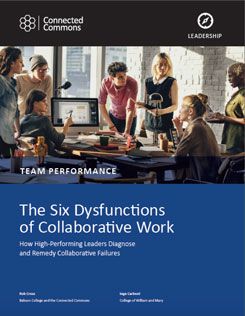 Network Strategy: Elevate Personal Performance and Well-beingPhysical Health is Not a Solo Sport
Network Strategy: Elevate Personal Performance and Well-beingPhysical Health is Not a Solo SportOur research is clear: Improving and maintaining physical health is not a solo sport. We found specific ways that connections with others help to initiate a healthier trajectory, to create “stickiness,” so it’s not abandoned when work becomes pressing, and importantly, to create benefits of identity, friendship and belonging that embed new health behaviors in our lives.
Download Article Network Strategy: Elevate Personal Performance and Well-beingSink or Swim? Navigating the Invisible Sea of Micro-stressors in an Always on World
Network Strategy: Elevate Personal Performance and Well-beingSink or Swim? Navigating the Invisible Sea of Micro-stressors in an Always on WorldThe volume, diversity and velocity of relational touch points we all experience today is beyond anything we have previously seen in the workplace. With our connection to an ever-widening span of relationships at work and at home comes increased exposure to a steady stream of what we are calling relationship-based micro-stressors. Through this research we identified 12 common “relational” micro-stressors and three strategies successful people employ to combat this invisible enemy.
Download Article Network Strategy: Execute Critical Work Through NetworksCollaborative Practices of High-Performing Teams: Agility at the Point of Execution
Network Strategy: Execute Critical Work Through NetworksCollaborative Practices of High-Performing Teams: Agility at the Point of ExecutionAgility at the point of execution in most organizations is driven by groups that form and engage rapidly in work through networks inside and outside of the initiative. This research reveals specific collaborative practices — in teams ranging from 8 to 300+ members – that differentiate successful teams by managing collaboration more intentionally to align with desired outcomes.
Download Article Network Strategy: Execute Critical Work Through NetworksThe Six Dysfunctions of Collaborative Work: How High-Performing Leaders Diagnose and Remedy Collaborative Failures
Network Strategy: Execute Critical Work Through NetworksThe Six Dysfunctions of Collaborative Work: How High-Performing Leaders Diagnose and Remedy Collaborative FailuresWe used network analysis across 66 organizations to identify patterns of network connectivity and collaborative practices associated with high-performing teams and units. This research revealed six patterns of collaborative dysfunction that have a negative impact on performance in 88 percent of the 66 organizations we studied. In this article, we characterize the types of dysfunction, a number of the drivers that create them, and a select set of remedies.
Download Article Network Strategy: Accelerate Role TransitionsRapid Transition Success: Five Powerful Network Strategies to Speed Success in New Roles
Network Strategy: Accelerate Role TransitionsRapid Transition Success: Five Powerful Network Strategies to Speed Success in New RolesA role transition – whether a promotion, a move to a new organization, or a fresh challenge in your existing job – can be a huge boost to your career, a chance for you to blossom and thrive. But traditional approaches to transitions overlook network drivers of performance. Based on a decade of quantitative studies employing ONA and 160 interviews with successful women and men, this white paper reviews five network strategies critical to success.
Download Article Network Strategy: Elevate Personal Performance and Well-beingReclaiming Your Day: How Successful People Manage Collaborative Overload
Network Strategy: Elevate Personal Performance and Well-beingReclaiming Your Day: How Successful People Manage Collaborative OverloadThe collaborative intensity of work has exploded over the past decade. The good news is that there are steps everyone can take to greatly alleviate collaborative overload. And, we’ve learned this doesn’t require heroic actions; typically doing just 4 or 5 things differently can enable people to buy back 18% to 24% of their time.
Download Article
 Rob Cross has studied the underlying network dynamics of effective organizations and the collaborative practices of high performers for more than 20 years. Through research and writing, speaking and consulting, and courses and tools, Rob’s network strategies are transforming the way people lead, work and live in a hyper-connected world.
Rob Cross has studied the underlying network dynamics of effective organizations and the collaborative practices of high performers for more than 20 years. Through research and writing, speaking and consulting, and courses and tools, Rob’s network strategies are transforming the way people lead, work and live in a hyper-connected world.